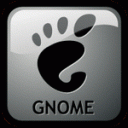Does Linux get viruses? No. Or to answer a little more truthfully, not usually, not easily, not to most users.
Why isn't Linux plagued by all the viruses, spyware, malware, root kits, ect. like Windows? The answer in twofold. First because Linux is set in a way as it becomes improbably that an outside program can be granted root access without the user knowing. Second because at this time the vast majority of desktop users have a Microsoft OS running their machine. If you want your virus to spread, you must write it to affect the biggest user base. For a more detailed explanation feel free to read this article.
On the other hand there are reasons you might want to have an antivirus program installed on your Linux distribution.
- to scan a Windows drive in your PC
- to scan a Windows-based network attached server or hard drive
- to scan Windows machines over a network
- to scan files you are going to send to other people
- to scan e-mail you are going to forward to other people
- some Windows viruses can run with Wine
- Linux virus infections are theoretically possible
 The first suggestion I have is going with ClamAV antivirus which you should be able to find in the repositories or at their website. This is an opensource software project.
The first suggestion I have is going with ClamAV antivirus which you should be able to find in the repositories or at their website. This is an opensource software project. The second suggestion I have is using AVAST which many of you will recognize from my windows articles about antivirus software. Although this is proprietary software, it is free for home users and you can find more detail at their website as well.
The second suggestion I have is using AVAST which many of you will recognize from my windows articles about antivirus software. Although this is proprietary software, it is free for home users and you can find more detail at their website as well.To summarize, I would not lose sleep wondering if your Linux system is being overrun by viruses, but for curiosity sake or for insurance in the future when Linux takes over the PC world I would check out these or other antivirus options.















